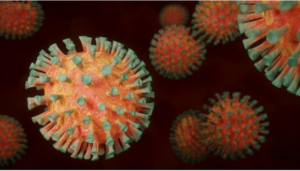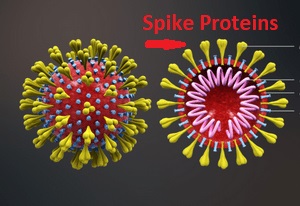
Are You Spike Protein Savvy?
We hear this term a lot, and they were mentioned in our previous article about cells, but what are spike proteins exactly? When we see doctors talking about Covid on TV, how can we follow along with what they are saying?
Here, we will break spike proteins down for you, step by step. With this knowledge article, you can then walk away knowing what spike proteins are and how the COVID-19 virus is associated with them. So let’s begin!
A Brief History of the Spike Protein

Before we go any further, let’s define variants. “A variant is a viral genetic code that may contain one or more mutations” – CDC.gov. In other words, a variant is a cell that may be defective.
With that said, a new coronavirus variant, officially called B.1.1.529 or Omicron, was detected in Botswana on November 11, 2021. On November 26, 2021, this new strain was designated a concern by the World Health Organization because of its high number of mutations in the spike protein.
This Omicron strain contains 32 mutations, compared to 18 for the previous Delta variant, and it is this high number of mutations in the Omicron spike protein has become a concern.
The more mutations in the spike protein, the more concern there is about the virus’s increase in transmissibility and a significant reduction in neutralization by antibodies. (See below about antibody neutralization)
Let us proceed in more detail about why a higher number of mutations in a spike protein is a concern for medical practitioners.
The Structure of the Coronavirus

If you closely examine the structure of the novel coronavirus, you will notice that the virus is spherical and enveloped. A viral envelope is the outermost layer of a virus. It protects the genetic material when traveling between host cells, but there are a few more features associated with this structure. Upon closer examination of the viral envelope, you will notice that it comprises three proteins:
- The membrane protein (M),
- The envelope protein (E), and
- The spike protein (S)
The Coronavirus Spike Protein
The spike protein plays a critical role in getting through to the host cells and subsequently starting an infection in the host’s body. In the case of the novel coronavirus, the presence of spike proteins is responsible for the spike-shaped protrusions and that is what you see on the virus’s surface that allows the virus to enter into the host’s body.
Researchers have divided the coronavirus spike proteins into two critical subunits:
- The S1 subunit, and
- The S2 subunit
The S1 subunit, also known as the N-terminal, forms the head of the spike protein, whereas the S2 subunit, also known as the C-terminal, forms the stalk of the protein, which is directly rooted in the viral envelope.
As soon as the virus interacts with ‘sees’ a healthy host cell, the S1 subunit binds to the receptors. The receptor is a structure on the host cell’s surface. Antibodies are designed to stop the S1 subunit from binding to the cell.
Spike protein’s S1 subunit’s receptor can bind to the human cell, infecting that cell. When antibodies are introduced into the body, they have the effect to neutralize the S1 subunit’s binding capacity. We suggest watching this video more than once to completely understand what the researcher is saying. For closed captioning, start the video and click the CC button.
Controlling COVID-19 by Targeting Coronavirus’s Spike Protein
Given the primary understanding of the role of the spike protein in the spread of a viral disease, it is now clear that without the spike proteins, no viruses, including the coronaviruses, will be able to interact with the host cells and cause infection.
It is precisely due to this reason that researchers are preliminarily interested in better understanding spike proteins and coming up with vaccines that target their function. So far, the vaccine developers currently use antibodies directed against them to control the spread of the disease.
As researchers gain more details, they are likely to figure out better ways to control the spread.
October 10, 2022 Update: Hospitals and medical providers have begun to use monoclonal antibodies to fight off the disease. These are lab-created antibodies and have proven to be fairly effective in helping patients to fight off Covid at an accelerated rate.
